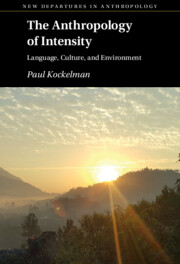Book contents
- The Anthropology of Intensity
- New Departures in Anthropology
- The Anthropology of Intensity
- Copyright page
- Dedication
- Contents
- Figures
- Tables
- Acknowledgments
- Abbreviations
- Introduction: Intensity
- Part I Grounds
- Part II Tensors
- Five Intensifiers
- Six The History of Mas
- Seven The Comparative Complex
- Eight Sentences and their Shadows
- Part III Thresholds
- Conclusion: The Ecological Self
- References
- Index
Five - Intensifiers
from Part II - Tensors
Published online by Cambridge University Press: 05 May 2022
- The Anthropology of Intensity
- New Departures in Anthropology
- The Anthropology of Intensity
- Copyright page
- Dedication
- Contents
- Figures
- Tables
- Acknowledgments
- Abbreviations
- Introduction: Intensity
- Part I Grounds
- Part II Tensors
- Five Intensifiers
- Six The History of Mas
- Seven The Comparative Complex
- Eight Sentences and their Shadows
- Part III Thresholds
- Conclusion: The Ecological Self
- References
- Index
Summary
Chapter 5 analyzes the structure, function, and history of intensifiers and indefinite quantities in Q’eqchi’. Such forms indicate the relative magnitude (amount, size, or degree) of various dimensions without the use of explicit numbers (two, 300, one million), units (dollars, pounds, degrees), or quantifiers (all, none, some). It surveys the form, meaning, and function of the most frequently used intensifiers in Q’eqchi’. In addition, it sketches a context-sensitive semantics of indefinite quantities, showing their core components and the ways these are mediated by code, context, and culture. It analyzes the comparative grounds presupposed by indefinite quantities and the relative elasticity of the magnitudes they indicate. It uses discourse data to rank the relative intensities, or comparative magnitudes, encoded by indefinite quantities – showing the ways they remain relatively invariant under variation.
- Type
- Chapter
- Information
- The Anthropology of IntensityLanguage, Culture, and Environment, pp. 117 - 147Publisher: Cambridge University PressPrint publication year: 2022

